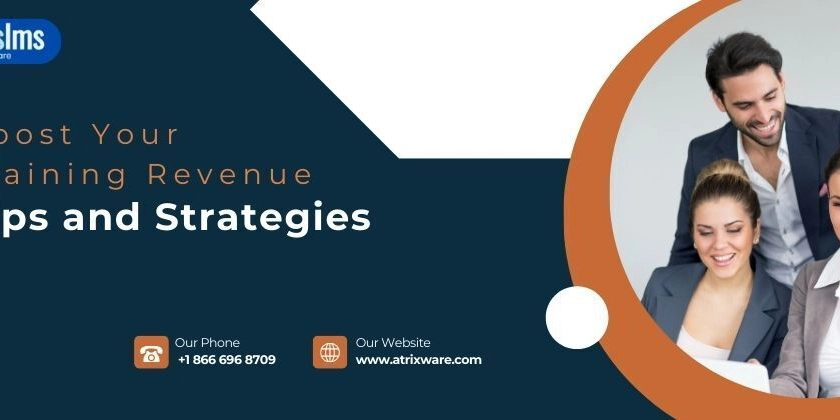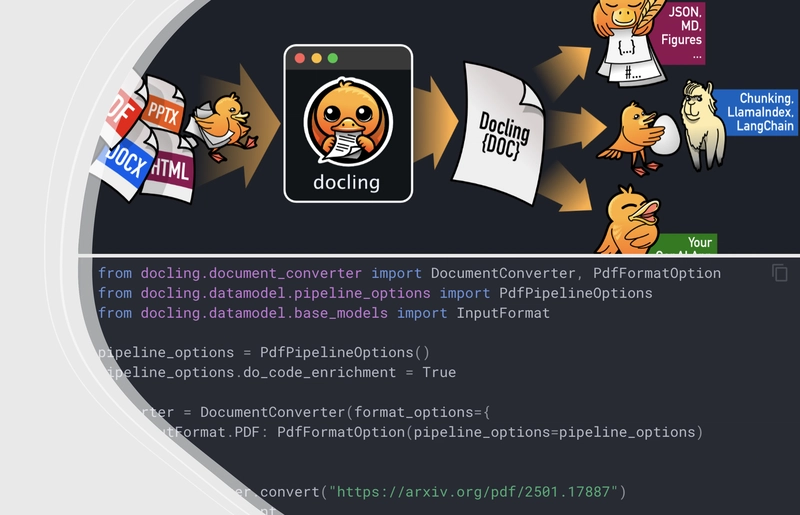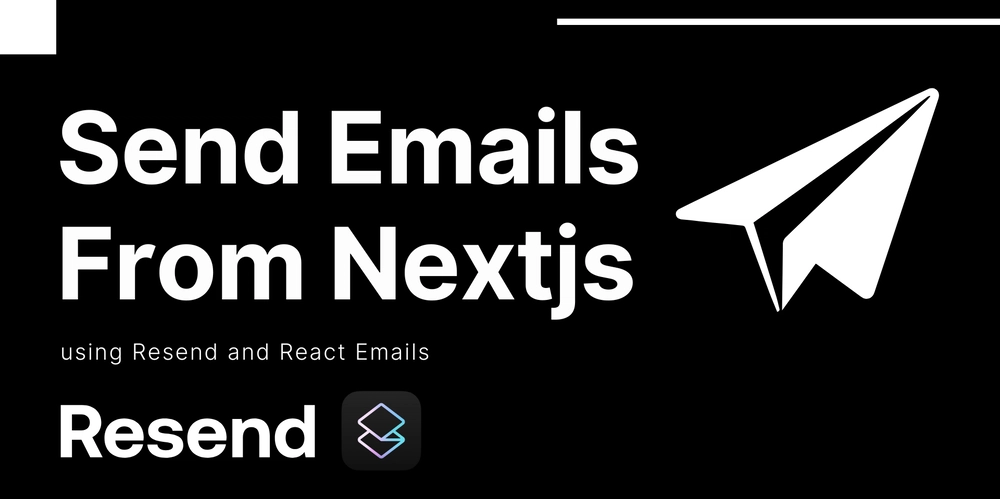Boost Your Training Revenue with an LMS: Tips and Strategies
In today’s fast-paced training industry, finding the right balance between profitability and program quality can be challenging. However, with the right tools, it's entirely achievable. One of the most powerful solutions for growing your training business is a Learning Management System (LMS). Far beyond being just a platform to host content, a well-chosen LMS can reshape the way you deliver, scale, and sell training. Whether you run a corporate training team, a professional development business, or an educational startup, this guide will walk you through how to leverage an LMS to increase revenue and deliver impactful learning experiences. The Value of an LMS A Learning Management System serves as the central hub for your training operations. It enables the seamless delivery, tracking, and management of learning content while reducing the manual workload associated with administration. For businesses that rely on training as a revenue stream, an LMS can open new doors to monetization and efficiency. This is especially true if you're looking for a learning management system for small business use cases, where budget and scalability matter. Many LMS platforms are built to support small teams, allowing them to deliver polished, professional training without high upfront costs. Core benefits of using an LMS: Centralized course management Automated learner tracking and reporting Integration with sales and marketing tools Scalable infrastructure to grow your audience Revenue-Boosting Tactics with an LMS 1. Expand Your Training Catalog An LMS lets you diversify your offerings by supporting various content types such as video lessons, live webinars, quizzes, and downloadable resources. By creating options for both self-paced and instructor-led formats, you’ll appeal to a broader range of learners. Tip: Develop learning paths tailored to different roles or industries. These structured experiences often provide more value—and can command higher pricing. 2. Offer Subscription-Based Access Think about transitioning from single-course purchases to a recurring subscription model. Monthly or yearly access plans ensure predictable income and encourage ongoing learner engagement. Design tiered subscription levels like: Starter Tier: Core content access Professional Tier: Full library access, certificates, and support Elite Tier: Personalized learning plans, coaching sessions, and live training events Recurring revenue models are especially effective for building long-term relationships and increasing customer lifetime value. 3. Build Credible Certification Programs Courses that offer formal recognition—whether certifications, digital credentials, or industry badges—carry more perceived value. Most LMS platforms allow you to design certification workflows that include assessments, assignments, and automated delivery of credentials. Pro insight: Collaborate with recognized organizations or industry bodies to issue co-branded certifications. This collaboration has the potential to greatly boost the credibility of your course. 4. Create Flexible Monetization Options Instead of selling only individual courses, bundle complementary content into packages, offer masterclasses, or host exclusive webinars for a premium price. If you’re exploring an LMS for selling training, ensure your platform supports: Integrated payment gateways Discount codes and promotions Affiliate or partner programs Analytics to track conversions and sales performance Additionally, consider licensing your training content to other educators or organizations, expanding your reach while earning passive revenue. 5. Engage Learners Through Gamification Gamification features like badges, points, leaderboards, and achievements can greatly improve the overall learning experience.These features motivate users, boost completion rates, and increase the chances they’ll return for more. Expert tip: Combine gamification with social features like discussion groups or challenges to build a strong learning community and increase user engagement organically. 6. Strengthen Your Marketing Approach Your LMS should be able to collect user engagement data to guide your marketing strategy. When integrated with your CRM or email marketing tools, this data can be used to personalize offers, send reminders, and automate follow-ups. Leverage tactics like: Drip email campaigns Personalized content recommendations Social proof (testimonials, case studies) Referral incentives and affiliate marketing Analyzing learner behavior also helps you make data-backed decisions about which courses to promote or retire. Sustainable Strategies for Long-Term Growth 1. Prioritize Learner Experience The more engaging and interactive your content is, the more likely your users are to stay with your platform. Use tools within your LMS to add knowledge chec

In today’s fast-paced training industry, finding the right balance between profitability and program quality can be challenging. However, with the right tools, it's entirely achievable. One of the most powerful solutions for growing your training business is a Learning Management System (LMS). Far beyond being just a platform to host content, a well-chosen LMS can reshape the way you deliver, scale, and sell training.
Whether you run a corporate training team, a professional development business, or an educational startup, this guide will walk you through how to leverage an LMS to increase revenue and deliver impactful learning experiences.
The Value of an LMS
A Learning Management System serves as the central hub for your training operations. It enables the seamless delivery, tracking, and management of learning content while reducing the manual workload associated with administration. For businesses that rely on training as a revenue stream, an LMS can open new doors to monetization and efficiency.
This is especially true if you're looking for a learning management system for small business use cases, where budget and scalability matter. Many LMS platforms are built to support small teams, allowing them to deliver polished, professional training without high upfront costs.
Core benefits of using an LMS:
Centralized course management
Automated learner tracking and reporting
Integration with sales and marketing tools
Scalable infrastructure to grow your audience
Revenue-Boosting Tactics with an LMS
1. Expand Your Training Catalog
An LMS lets you diversify your offerings by supporting various content types such as video lessons, live webinars, quizzes, and downloadable resources. By creating options for both self-paced and instructor-led formats, you’ll appeal to a broader range of learners.
Tip: Develop learning paths tailored to different roles or industries. These structured experiences often provide more value—and can command higher pricing.
2. Offer Subscription-Based Access
Think about transitioning from single-course purchases to a recurring subscription model. Monthly or yearly access plans ensure predictable income and encourage ongoing learner engagement.
Design tiered subscription levels like:
Starter Tier: Core content access
Professional Tier: Full library access, certificates, and support
Elite Tier: Personalized learning plans, coaching sessions, and live training events
Recurring revenue models are especially effective for building long-term relationships and increasing customer lifetime value.
3. Build Credible Certification Programs
Courses that offer formal recognition—whether certifications, digital credentials, or industry badges—carry more perceived value. Most LMS platforms allow you to design certification workflows that include assessments, assignments, and automated delivery of credentials.
Pro insight: Collaborate with recognized organizations or industry bodies to issue co-branded certifications. This collaboration has the potential to greatly boost the credibility of your course.
4. Create Flexible Monetization Options
Instead of selling only individual courses, bundle complementary content into packages, offer masterclasses, or host exclusive webinars for a premium price.
If you’re exploring an LMS for selling training, ensure your platform supports:
Integrated payment gateways
Discount codes and promotions
Affiliate or partner programs
Analytics to track conversions and sales performance
Additionally, consider licensing your training content to other educators or organizations, expanding your reach while earning passive revenue.
5. Engage Learners Through Gamification
Gamification features like badges, points, leaderboards, and achievements can greatly improve the overall learning experience.These features motivate users, boost completion rates, and increase the chances they’ll return for more.
Expert tip: Combine gamification with social features like discussion groups or challenges to build a strong learning community and increase user engagement organically.
6. Strengthen Your Marketing Approach
Your LMS should be able to collect user engagement data to guide your marketing strategy. When integrated with your CRM or email marketing tools, this data can be used to personalize offers, send reminders, and automate follow-ups.
Leverage tactics like:
Drip email campaigns
Personalized content recommendations
Social proof (testimonials, case studies)
Referral incentives and affiliate marketing
Analyzing learner behavior also helps you make data-backed decisions about which courses to promote or retire.
Sustainable Strategies for Long-Term Growth
1. Prioritize Learner Experience
The more engaging and interactive your content is, the more likely your users are to stay with your platform. Use tools within your LMS to add knowledge checks, simulations, discussion forums, or scenario-based learning.
Happy, engaged learners are your best marketers—they’re more likely to return and refer others.
2. Customize and Brand Your LMS
Tailoring your LMS interface to align with your brand enhances credibility and presents a more professional image.White-label solutions allow you to maintain your identity across every learner touchpoint—from login pages to certificates.
Customization isn’t just about appearance; tailoring user dashboards, course flows, and reports can enhance the learner journey and reflect your training goals more accurately.
3. Let Analytics Guide Your Strategy
One of the major advantages of using a digital platform is access to real-time data. Monitor performance indicators such as completion rates, average time per course, and learner satisfaction to continually improve.
Pro strategy: Use analytics to A/B test course titles, pricing structures, and marketing campaigns for optimal performance.
4. Reach New Markets
The scalability of an LMS allows you to expand into new regions, industries, and customer segments. Translate your content into different languages or create industry-specific training programs to reach a global audience.
Corporate opportunity: Package your training programs for business clients who want to upskill their teams. Offer enterprise packages with admin dashboards and bulk licensing.
Final Thoughts
A Learning Management System isn’t just a backend tool—it’s a strategic platform that can transform your training business into a scalable, profitable venture. By applying the tactics outlined above, you can attract more learners, boost engagement, and open up new revenue channels.
Whether you're a solo trainer or a growing team, choosing the right LMS can empower you to expand your impact and grow sustainably. From increasing user engagement to launching a new business model, the possibilities are vast.
It’s time to think beyond course delivery. With the right LMS, you can build a powerful engine for business growth—starting today.











































































































































































![[The AI Show Episode 143]: ChatGPT Revenue Surge, New AGI Timelines, Amazon’s AI Agent, Claude for Education, Model Context Protocol & LLMs Pass the Turing Test](https://www.marketingaiinstitute.com/hubfs/ep%20143%20cover.png)





























































































































![From Accountant to Data Engineer with Alyson La [Podcast #168]](https://cdn.hashnode.com/res/hashnode/image/upload/v1744420903260/fae4b593-d653-41eb-b70b-031591aa2f35.png?#)





































































































.png?#)









































































































































![Apple Watch SE 2 On Sale for Just $169.97 [Deal]](https://www.iclarified.com/images/news/96996/96996/96996-640.jpg)

![Apple Posts Full First Episode of 'Your Friends & Neighbors' on YouTube [Video]](https://www.iclarified.com/images/news/96990/96990/96990-640.jpg)


































































































































